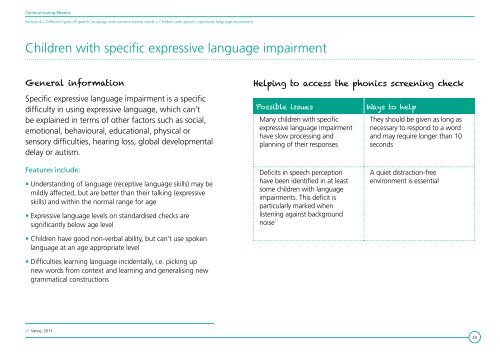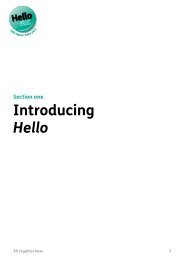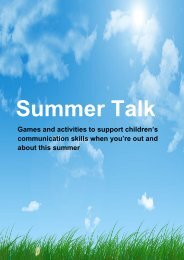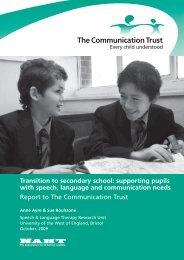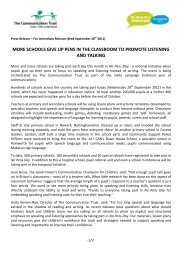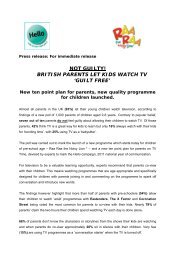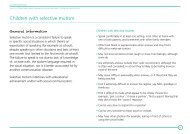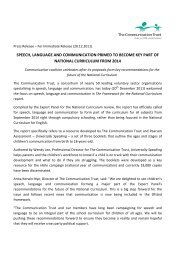Communicating Phonics - The Communication Trust
Communicating Phonics - The Communication Trust
Communicating Phonics - The Communication Trust
Create successful ePaper yourself
Turn your PDF publications into a flip-book with our unique Google optimized e-Paper software.
<strong>Communicating</strong> <strong>Phonics</strong>Section 4 > Different types of speech, language and communication needs > Children with specific expressive language impairmentChildren with specific expressive language impairmentGeneral informationSpecific expressive language impairment is a specificdifficulty in using expressive language, which can’tbe explained in terms of other factors such as social,emotional, behavioural, educational, physical orsensory difficulties, hearing loss, global developmentaldelay or autism.Helping to access the phonics screening checkPossible issuesMany children with specificexpressive language impairmenthave slow processing andplanning of their responsesWays to help<strong>The</strong>y should be given as long asnecessary to respond to a wordand may require longer than 10secondsFeatures include:• Understanding of language (receptive language skills) may bemildly affected, but are better than their talking (expressiveskills) and within the normal range for age• Expressive language levels on standardised checks aresignificantly below age level• Children have good non-verbal ability, but can’t use spokenlanguage at an age appropriate level• Difficulties learning language incidentally, i.e. picking upnew words from context and learning and generalising newgrammatical constructionsDeficits in speech perceptionhave been identified in at leastsome children with languageimpairments. This deficit isparticularly marked whenlistening against backgroundnoise 21A quiet distraction-freeenvironment is essential21 Vance, 201128


